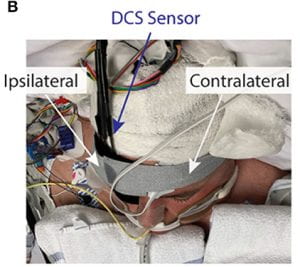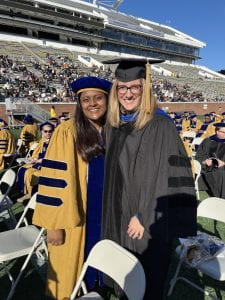Check out our latest paper in Frontiers in Neurology. One of the common complications of non-traumatic subarachnoid hemorrhage (SAH) is secondary stroke known as delayed cerebral ischemia (DCI). Intrathecal (IT) administration of nicardipine, a calcium channel blocker, upon detection of large-artery cerebral vasospasm holds promise as a treatment that reduces the incidence of DCI. However, there are currently no reliable methods for determining of treatment is working in individual patients.

In this observational study, Sathialingam et al. prospectively employed a non-invasive optical modality called diffuse correlation spectroscopy (DCS) to quantify the acute microvascular cerebral blood flow response to intrathecally administered nicardipine in 20 patients with medium-high grade non-traumatic SAH, with the goal of assessing DCS-measured cerebral blood flow response as a potential biomarker of treatment efficacy. We observed that, on average, blood flow increased significantly with time post-treatment. However, individual patient responses fell into two distinct classes: (1) those showing no significant change in blood flow and (2) those showing a pronounced increase after treatment with IT nicardipine. The incidence of DCI was 5 out of 6 in Class 1 and 1 out of 13 in Class 2 (p < 0.001). These results suggest that the acute (<90 min) DCS-measured brain blood flow response to IT nicardipine is a biomarker of treatment efficacy, which could be used to identify non-responders in time to initiate alternative therapies to prevent secondary stroke after subarachnoid hemorrhage.

